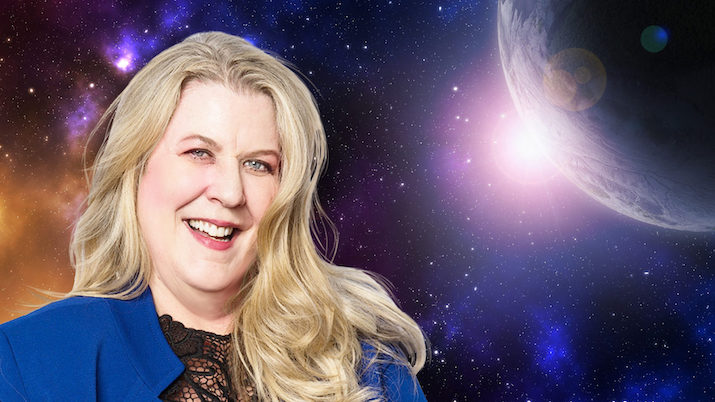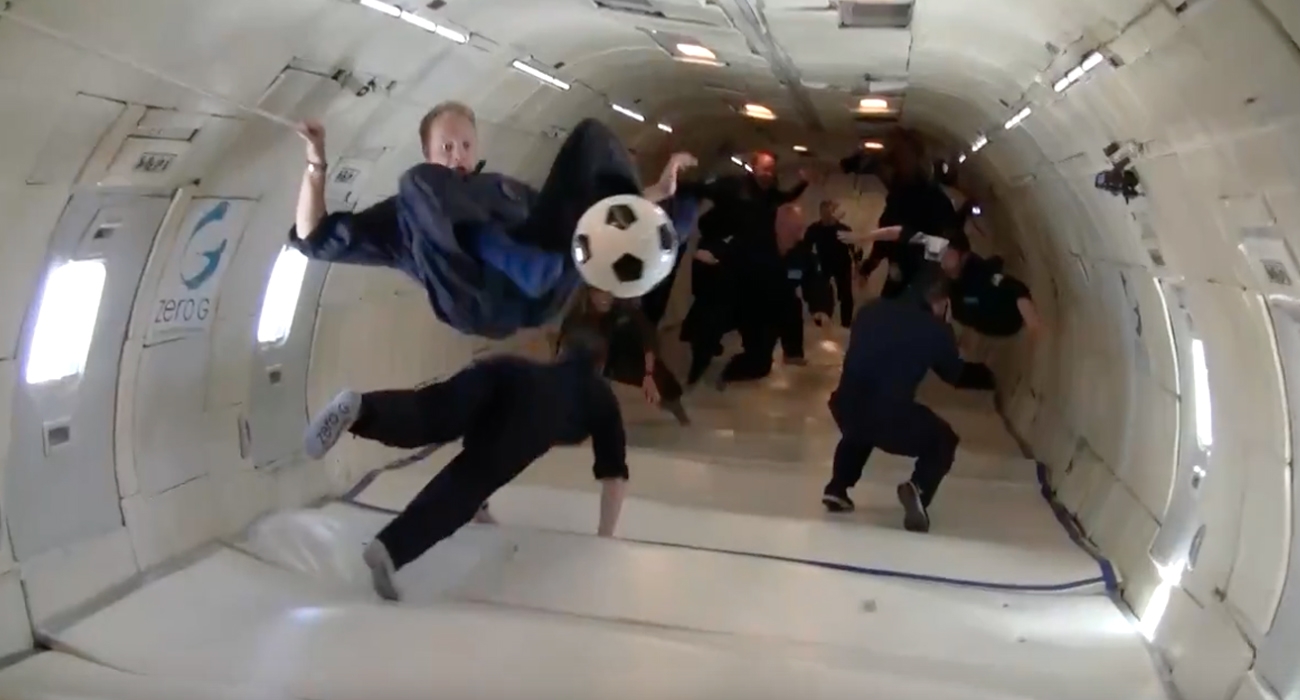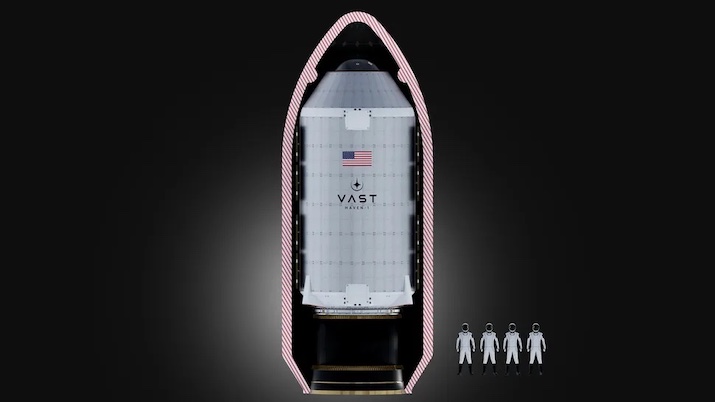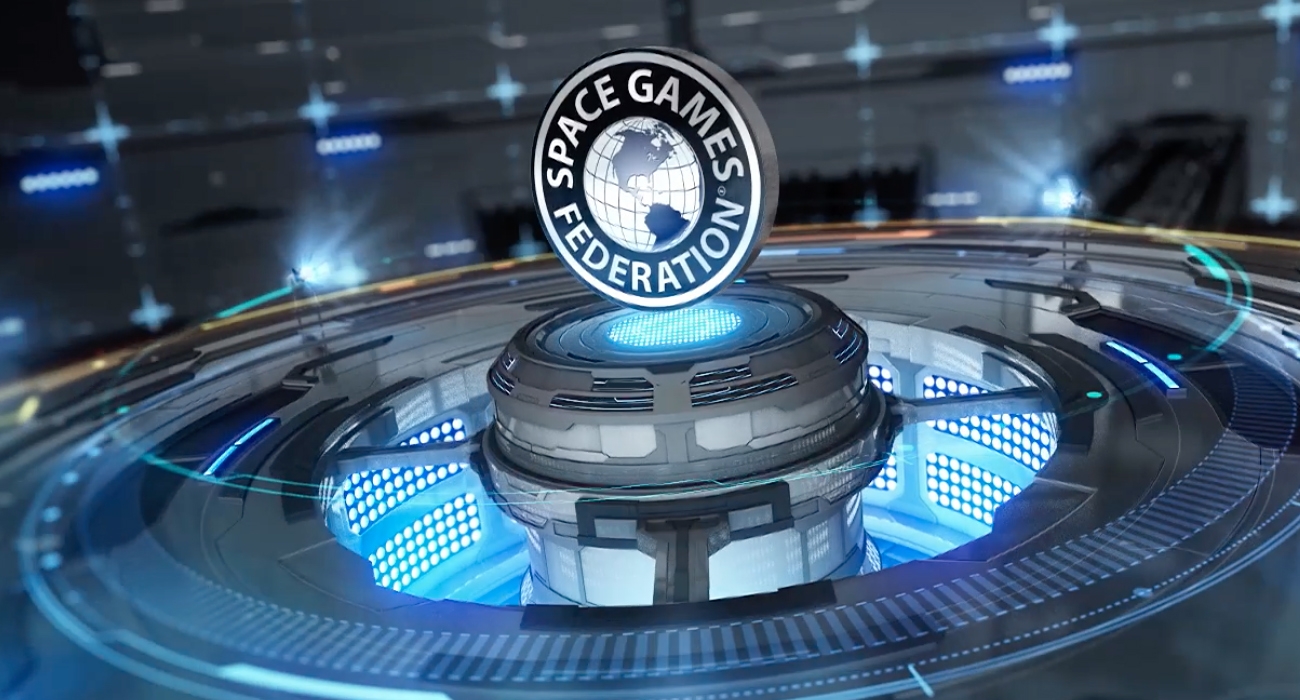Space Games Federation Aims To Create Sports for Zero Gravity
Besides being something new to bet on, sports in space could enhance astronaut fitness
Story Highlights
The immigrant pioneers who settled the American continent brought with them horses, cattle, guns, and a few pandemic-inducing diseases. They also brought their sports. In 1691, the governor of the Virginia colony established organized competitions for shooting, wrestling, and races of the foot and hoof sorts. The next frontier for placing bets? Space, most likely.
“It’s the next natural step, not a quantum leap,” says Linda Rheinstein, chairperson, Space Games Federation, which seeks to create new sports or modify existing ones for a zero-gravity arena.

Space Games Federation’s Linda Rheinstein: “This is no pipe dream. Our playing field will be as big as the universe.”
A competition held on the organization’s website solicited proposals for such sports. Submissions were welcomed from anyone, regardless of age, gender, ability, and nationality. Four of the five semifinalists were proposed by young teenagers: Inno, in which competitors use trampolines and Velcro-padded walls to throw or bounce a ball through the opposing team’s goal; Spaceball, in which competitors must get a magnetic ball through a hoop of the same polarity while the opposition attempts to do the same; Shooting Star, where athletes guide a ball through one of three heavily guarded goals while defending against a remote-controlled drone; Space Dodgeball, in which players evade incoming balls from an opposing team by throwing obstacles in their way.
Another game on the agenda, Float Ball, was developed by Rheinstein and Ken Harvey, a former Washington Redskins (now Commanders) linebacker. It comprises elements of football, dodgeball, and basketball, moving balls of various colors to a total of four goals at either end of the field of play, whether that’s a spaceship cabin or some type of space arena.
Getting to that stage will take time and money, but the foundations are being laid now. In the wake of the John Glenn, Neil Armstrong, and Space Shuttle eras, space tourism has arrived for the billionaire class, with suborbital and orbital rides priced at six figures per seat, $55 million ISS visits, stratospheric balloon flights, and simulated zero-gravity flights. Financial-services firm UBS predicts that such activities will be worth $23 billion by 2030. Space-yacht and moon-buggy races may not be far behind.

Space Games Confederation seeks to create new sports or modify existing ones for a zero-gravity arena.
As NASA relies increasingly on commercial rocket and satellite providers, the private sector will look for more ways to leverage the investment. Sports could play a key role, and Rheinstein, who was mentored by late Apollo 17 crewmember Gene Cernan, sees herself as a bridge to that future. Her late father, NBC News director Frederic Rheinstein, served as onsite director in Houston for coverage of NASA space missions of the 1960s and ’70s, and she happily shares her souvenirs of that era, including autographed photos of the early astronaut corps.
A member of the Sports Broadcasting Hall of Fame, Rheinstein worked on sports broadcasts in the 1970s, ’80s, and ’90s, including productions — the 1978Long Beach Grand Prix, for example — that put some of the first cameras in race cars. As one of the first Chyron owner/operators in 1994, she was an integral part of the development of the then-nascent Fox Sports approach to on-screen graphics.
Sports in space, Rheinstein contends, could also promote more equality in sports, a fraught notion at a moment when gender uncertainty has disrupted academic, semi-pro, and professional sports.

Artist’s illustration of Vast Space’s Haven-1 space station inside the payload fairing of a SpaceX Falcon 9 rocket (Image: Vast Space LLC)
“We have a chance to define the equality of the LEO [low earth orbit] zero-gravity environment” with sports, she says. “When you’re floating around, everybody’s the same.”
With several new space stations on various drawing boards and the next U.S. manned mission to the moon planned for 2025 (delayed from its scheduled 2024 launch), Rheinstein says, opportunities for sports in space are only increasing.
“Everything that goes to space or runs around up there is going to be our playing field,” she contends, adding that she has had discussion with Space X, Blue Origin, and Vast (a company launched in September 2022 to develop the world’s first artificial-gravity space stations) about integrating sports into space flight as a way to maintain fitness and occupy the long stretches of time that spaceflight will entail. “Anywhere in space that contains humans is a playing field.”
Calling Shots in Space
Regardless of the kinds of bombastic sound effects that Industrial Light & Magic attributes to outer space in Star Wars, actual scientists and other killjoys remind us that it’s an airless void and thus a place where it’s impossible to experience sound. Only inside space vessels can sports audio happen.

Only inside space vessels can sports audio happen.
Fortunately, broadcast sports has had some experience with that lately. When the COVID pandemic shut fans out of arenas and stadiums, televised games were able to achieve a simulacrum of sound via so-called augmented crowd-sound systems. These were developed by several startups and other production vendors to supply and manage appropriate crowd sound and reactions for home viewers (and, in a few instances, for the players themselves over dedicated PA systems). Both Rob Oldfield, CEO, Salsa Sound, which supplied its vCROWD augmented crowd sounds for the Premier League and others, and Fred Vogler, president, Sonofans, whose system was deployed for NFL and MLB games, among other leagues, consider sound in space an achievable challenge.
“To create a great audio soundscape,” opines Oldfield, “I think the answer would be the use of sensors, such as accelerometers, to get the vibration and movement of objects and then use tools like [Salsa Sound’s] MIXaiR for some real-time sound design, such as triggering samples, for instance, to make it sound compelling even if they are sounds that you wouldn’t actually be able to hear in space, a bit like the way they did the sound design for the movie Gravity. And we could definitely have some fun with some AI and sound design. It’s a completely new field so there are no rules, which would be exciting.”
Vogler, whose high school bands were named for George Lucas–centric entities — Millennium Falcon and Jet-Eye — is also ready to make space rumble.
“I grew up with Star Wars and Universe: Epic Battle,” he notes. “I definitely want to be part of sports in space, which should include a lot of sound design. As we have heard on terrestrial broadcasts, games sound better with crowd noise, reactions, team chants, and so on. It’s better for viewers as well as players to hear the support of fans and roar of the crowd. A silent sport without any cheers, applause, or familiar game-time sounds would be pretty dull.”
The Final Frontier
Rheinstein continues to dialog with broadcast and streaming sports networks, as well as Space X, Blue Origin, and other space-flight entities, about the potential for sports in space. She says her timetable could be as close as the end of this year or next, although it’s at the mercy of commercial space flight’s progress. The most recent flight, the launch last November of SpaceX’s uncrewed spacecraft Starship, developed to carry astronauts to the moon and beyond, failed shortly after lifting off, cutting short its second test but, like America’s earliest space ventures, making it farther into space than an earlier attempt, which had also ended in an explosion.
But Rheinstein’s optimism seems as boundless as space itself. She cites pending launches of as many as four space stations in the next 24 months, any of which could host a zero-gravity game or two as part of long-term fitness regimens. She’s also confident enough to also worry a little bit about the extraterrestrial version of getting beaned at the ballpark.
“If you kick a ball and hit the fuselage, we [catastrophically] decompress, and, if there’s no net, then see you later — we’re at Uranus,” she quips, bur quickly adds, “This is no pipe dream. Our playing field will be as big as the universe.”
For more information on the Space Games Federation visit spacegamesfederation.com and check out the video below for more details:
